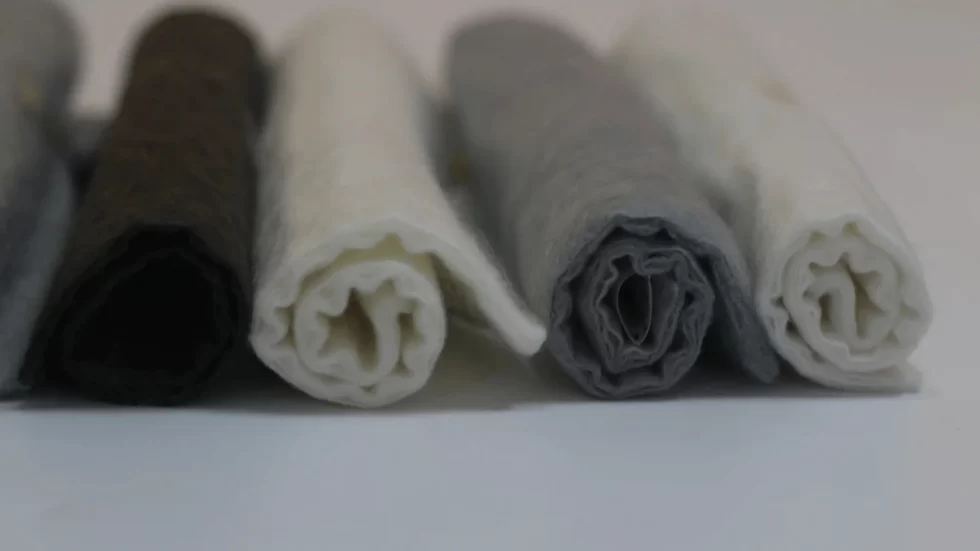The Environmental Advantages of Geotextile Applications

In today’s era of sustainable development, geotextile applications emerge as a beacon of environmentally friendly solutions. Non woven geotextile applications in global infrastructure projects, these versatile materials offer a myriad of benefits that extend far beyond their primary functions.
Enhanced Soil Stability
Geotextiles play a crucial role in soil stabilization, mitigating erosion, and preventing sedimentation. By reinforcing soil structures, they reduce the need for extensive earthworks and excavation, thereby minimizing disruption to natural landscapes. Non woven geotextile provide an effective barrier against erosion, preserving fertile land and protecting ecosystems.
Improved Water Management
Water is both a precious resource and a potential hazard. Geotextiles aid in efficient water management by facilitating drainage, filtration, and containment. In coastal regions prone to flooding or erosion, strategically placed geotextile applications act as barriers, preventing soil loss and minimizing damage caused by storm surges or heavy rainfall. Moreover, by promoting infiltration and reducing runoff, geotextiles help replenish groundwater reserves and maintain hydrological balance.
Ecological Restoration
The restoration of degraded ecosystems requires innovative solutions that balance ecological needs with human activities. Geotextiles offer a non-invasive method for restoring habitats and protecting biodiversity. Non woven geotextile serve as substrates for vegetation growth, enabling the establishment of vegetation cover on barren slopes, mine sites, or urban brownfields. This process not only stabilizes the soil but also enhances habitat suitability for native flora and fauna, contributing to ecosystem resilience and biodiversity conservation.
Erosion Control
Erosion poses a significant threat to land productivity and ecosystem health worldwide. Geotextiles combat erosion by reinforcing vulnerable surfaces and preventing soil displacement. Geotextile applications provide cost-effective erosion control measures that are less intrusive than traditional methods. By stabilizing slopes, shorelines, and riverbanks, geotextiles safeguard infrastructure, agricultural lands, and natural habitats from the destructive forces of wind and water.
Sustainable Infrastructure
As societies strive for sustainable development, the demand for eco-friendly construction materials grows. Geotextiles align with this ethos by offering durable, long-lasting solutions that minimize environmental impact. In rapidly developing urban centers, non woven geotextile Indonesia find extensive use in road construction, retaining walls, and landfill liners, providing structural support while reducing material consumption and construction waste. By prolonging the lifespan of infrastructure and reducing maintenance requirements, geotextiles contribute to the sustainable management of resources and the built environment.
Soil Remediation
Contaminated soil poses risks to human health and the environment, requiring remediation measures to restore its quality. Geotextiles play a vital role in soil remediation by facilitating soil stabilization, filtration, and containment of pollutants. In industrial sites or brownfields where soil contamination is a pressing issue, geotextile applications create physical barriers that prevent the spread of contaminants and facilitate the removal or treatment of polluted soil. This approach minimizes the environmental footprint of remediation activities while safeguarding surrounding ecosystems and groundwater resources.
Cost-Efficiency and Versatility
Beyond their environmental benefits, geotextiles offer practical advantages in terms of cost-efficiency and versatility. Compared to traditional materials like concrete or steel, geotextile applications are lightweight, easy to transport, and simple to install, reducing construction time and labor costs. Their adaptability to various terrains and climates makes them suitable for diverse applications, from road construction to coastal protection, offering tailored solutions to specific environmental challenges.
Conclusion
In conclusion, the environmental benefits of geotextile applications, including non woven geotextile in the world, are manifold and far-reaching. From soil stabilization to erosion control, ecological restoration, and sustainable infrastructure, geotextiles offer innovative solutions that harmonize human activities with the natural environment. By embracing these eco-friendly materials, we can build a more resilient and sustainable future for generations to come.
For more information about Geotextile Non Woven Factory in Indonesia, please contact: Whatsapp/Mobile Phone : +62 811 1721 338 (Ms. Ratna), or: Email : [email protected].